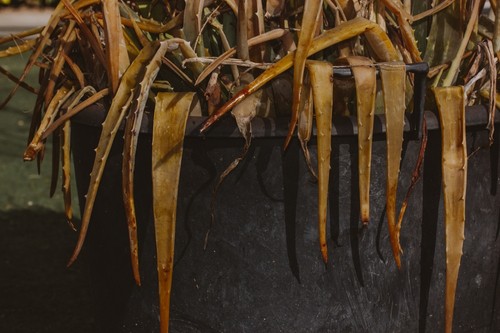Aloe vera is a popular succulent plant known for its medicinal properties. It is easy to grow and requires minimal maintenance, making it a favorite among gardeners. However, sometimes aloe vera plant leaves drooping or wilting, can be a cause for concern.
There are several reasons why an aloe vera plant may droop, including overwatering, inadequate sunlight, poor drainage, pests, and diseases. Understanding the underlying cause is crucial to reviving a drooping aloe vera plant.
In this article, we will explore the various factors that can cause aloe vera plant leaves to droop and provide solutions to help restore the plant to its healthy state.
Key Takeaways
- Aloe vera plants are easy to grow and maintain, but sometimes their leaves may droop or wilt, indicating an underlying problem.
- The most common reasons for aloe vera plant drooping include overwatering, inadequate sunlight, poor drainage, pests, and diseases.
- Understanding the cause of aloe vera plant drooping is crucial to reviving the plant, and solutions include adjusting watering practices, providing adequate sunlight, checking for pests and diseases, and repotting the plant.
Don’t miss these other similar posts:
Understanding Aloe Vera Plant Drooping
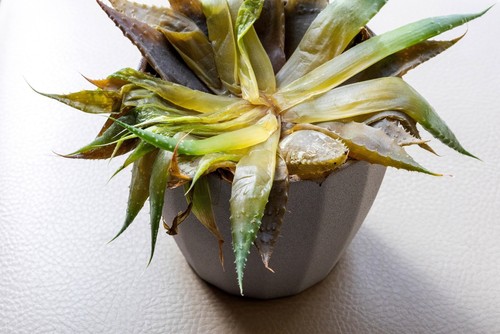
Aloe vera plants are known for their hardy nature, but sometimes they can experience drooping or wilting leaves. This can be a cause for concern for plant owners, but it’s important to understand the signs and common causes of drooping to properly address the issue.
Signs of Drooping Aloe Vera Plants
Drooping aloe vera plants can exhibit a few different signs, including:
- Limp or wilted leaves
- Leaves that bend or fold over
- Leaves that fall over or lie flat
Common Causes of Drooping
There are several common causes of drooping aloe vera plants, including:
| Cause | Description |
| Overwatering | Aloe vera plants are susceptible to root rot from overwatering, which can cause the leaves to droop and turn brown. |
| Underwatering | Conversely, underwatering can also cause drooping leaves. Aloe vera plants need well-draining soil and should be watered when the top inch of soil is dry. |
| Pot Size | If the aloe vera plant has outgrown its pot, the roots may become cramped and unable to absorb water properly, leading to drooping leaves. |
| Heat Stress | Aloe vera plants prefer temperatures between 60-75°F (15-24°C) and can experience leaf drooping in extreme heat or cold. |
| Pests or Disease | Pests or disease can also cause drooping leaves in aloe vera plants. It’s important to inspect the plant regularly for signs of infestation or infection. |
Understanding the signs and common causes of drooping aloe vera plants can help plant owners properly address the issue and ensure the health of their plant.
Watering Related Issues
When it comes to taking care of an Aloe Vera plant, watering is one of the most important aspects. Overwatering or underwatering can cause the plant to droop and wilt. In this section, we will discuss the effects of overwatering and underwatering on Aloe Vera plants.
Overwatering and Its Effects
Overwatering is one of the most common reasons for Aloe Vera plant leaves drooping. When a plant is overwatered, the soil becomes waterlogged, and the roots cannot get enough oxygen. This can lead to root rot, which can be fatal for the plant.
Symptoms of overwatering include yellowing leaves, mushy stems, and a foul odor coming from the soil. If you suspect that your Aloe Vera plant is overwatered, it is essential to reduce the amount of water you are giving it and allow the soil to dry out before watering again.
Underwatering and Its Symptoms
Underwatering can also cause Aloe Vera plant leaves to droop. When a plant is underwatered, the soil becomes dry, and the roots cannot absorb enough water. This can cause the leaves to become thin and brittle.
Symptoms of underwatering include dry soil, brown and crispy leaves, and slow growth. If you suspect that your Aloe Vera plant is underwatered, it is essential to increase the amount of water you are giving it and ensure that the soil is consistently moist.
It is important to establish a watering schedule that is appropriate for your Aloe Vera plant, as every plant’s needs are different.
Factors such as the size of the plant, the size of the pot, and the humidity of the environment can all affect the plant’s watering needs. It is also important to ensure that the pot has proper drainage to prevent excess water from accumulating in the soil.
Soil and Drainage Problems
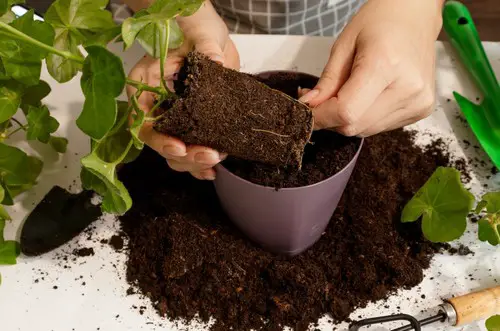
Importance of Proper Drainage
Aloe vera plants require well-draining soil to thrive. Poor drainage can lead to root rot and other issues that cause the leaves to droop. It is important to ensure that the pot has adequate drainage holes to allow excess water to escape. If there are no drainage holes, the soil will stay too moist, which can cause the roots to rot and the leaves to droop.
Choosing the Right Soil
Choosing the right soil is also important for preventing aloe vera leaves from drooping. Aloe vera plants prefer a sandy, well-draining soil. A good soil mix for aloe vera can be made by combining two parts of sand or perlite with one part of potting soil. This will ensure that the soil drains well and does not retain too much moisture.
It is also important to avoid using heavy soils, such as clay, which can retain too much moisture and cause the roots to rot. If the soil is too heavy, it can be amended with sand or perlite to improve drainage.
Overwatering can also lead to soil and drainage problems. Aloe vera plants should be allowed to dry out between waterings to prevent the soil from becoming too moist. It is important to water the plant thoroughly and then allow the soil to dry out before watering again.
Light and Temperature Factors
Light Requirements of Aloe Vera
Aloe vera is a succulent that requires plenty of sunlight to thrive. Direct sunlight is ideal for the plant, but it can also tolerate partial shade. However, if the plant is kept in a low-light area for too long, it may start to droop.
If the aloe vera is an indoor plant, it should be placed near a window that receives plenty of sunlight. If the plant is kept outdoors, it should be placed in an area that receives full sun for at least six hours a day.
Temperature Preferences of Aloe Vera
Aloe vera plants prefer consistent temperatures between 60-75°F (15-24°C). They can tolerate slightly higher temperatures, but sudden temperature changes or extreme heat can cause the plant to droop or even die.
If the plant is kept indoors, it should be placed in a room with a consistent temperature and away from any drafts or heating/cooling vents. If the plant is kept outdoors, it should be brought inside if there is a risk of extreme heat or cold.
Pests and Diseases

Common Pests and How to Deal with Them
Aloe vera plants are susceptible to pest infestations, which can cause leaves to droop and wilt. Common pests that can affect aloe vera plants include mealybugs, spider mites, and aphids. These pests can be identified by their small size and the damage they cause to leaves.
To deal with these pests, it is best to use natural remedies such as neem oil or horticultural oil. These oils can be mixed with water and sprayed onto the affected leaves. This will help to suffocate and kill the pests. It is important to repeat the process every few days until all the pests are gone.
Identifying and Treating Diseases
Aloe vera plants can also be affected by various fungal diseases, which can cause black, yellow, or brown spots on the leaves. A common fungal disease that affects aloe vera plants is aloe rust. This disease is caused by a fungus and can be identified by the orange spores that appear on the leaves.
To treat fungal infections, it is best to use a fungicide that is specifically designed for aloe vera plants. This will help to kill the fungus and prevent it from spreading. It is important to follow the instructions on the fungicide carefully and to apply it regularly until the infection is gone.
In addition to using fungicides, it is also important to practice good plant hygiene. This includes removing any dead or dying leaves and providing good airflow around the plant. This will help to prevent fungal diseases from taking hold and spreading throughout the plant.
Overall, by being vigilant and taking the necessary steps to prevent and treat pest infestations and fungal diseases, aloe vera plants can thrive and remain healthy.
Transplanting and Repotting Issues
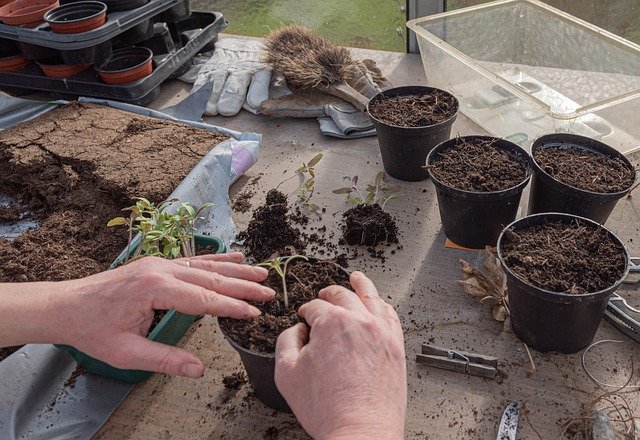
When and How to Transplant
Transplanting an aloe vera plant can be a tricky process, and it is important to know when and how to do it properly. One of the main reasons for transplanting is when the plant has outgrown its current container.
Signs that an aloe vera plant needs to be transplanted include roots growing out of the drainage holes, the plant becoming root-bound, and the soil drying out too quickly.
The best time to transplant an aloe vera plant is during the spring or early summer when the plant is actively growing. Before transplanting, make sure to remove any dead or damaged leaves and loosen the soil around the roots. Carefully remove the plant from its current container, being sure to avoid damaging the roots.
Repotting Tips and Techniques
When repotting an aloe vera plant, it is important to choose a container that is at least 2 inches larger in diameter than the current container. The new container should also have drainage holes to prevent overwatering and root rot. It is recommended to use a well-draining soil mix that is specifically formulated for cacti and succulents.
When repotting, gently remove the plant from its current container and carefully loosen any tangled roots. Place the plant in the new container and fill in the gaps with soil, being sure to leave some space at the top for watering. Water the plant thoroughly after repotting and avoid direct sunlight for a few days to reduce transplant shock.
It is important to note that transplant shock can occur after repotting, which can cause the leaves to droop. To prevent transplant shock, it is recommended to water the plant deeply a few days before repotting and to avoid overwatering after repotting.
Aloe Vera Plant Care
Aloe vera plants are easy to care for and can make a great addition to any home or office. In this section, we will cover some general care tips for aloe vera plants and discuss the benefits of having one in your space.
General Care Tips
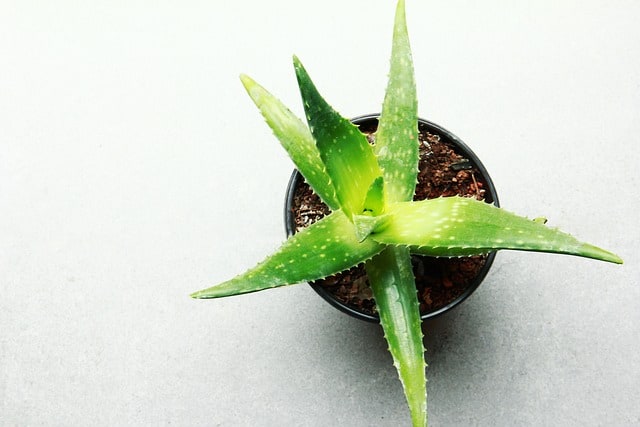
Aloe vera plants are succulents, meaning they store water in their leaves. As a result, they do not require frequent watering. Overwatering can cause the leaves to become yellow or brown, and the plant may start to droop. On the other hand, if the plant is not watered enough, the leaves may become wrinkled or wilted.
To care for your aloe vera plant, make sure to place it in a well-draining pot with soil that allows for proper drainage. The plant should be placed in an area with bright, indirect sunlight. Direct sunlight can be harmful to aloe vera plants and may cause the leaves to become burnt.
In terms of watering, it is best to wait until the soil has dried out completely before watering again. This may take up to two weeks, depending on the growing conditions. It is also important to avoid getting water on the leaves, as this can cause the plant to rot.
Benefits of Aloe Vera
In addition to being a low-maintenance houseplant, aloe vera plants have a variety of benefits. Aloe vera gel can be used topically to help soothe sunburns, cuts, and other skin irritations. It can also be used as a moisturizer or to help reduce the appearance of fine lines and wrinkles.
Aloe vera gel can also be ingested and has been shown to have anti-inflammatory properties. It may help to improve digestion, boost the immune system, and even lower blood sugar levels in people with diabetes.
Overall, aloe vera plants are a great addition to any space. With proper care, they can thrive and provide a variety of benefits to their owners.
Frequently Asked Questions
How do you fix a droopy aloe vera plant?
There are several ways to fix a droopy aloe vera plant. First, check the soil moisture level and make sure it is not too dry or too wet. If the soil is too dry, water the plant thoroughly and allow the excess water to drain out. If the soil is too wet, allow it to dry out before watering again. Additionally, make sure the plant is getting enough sunlight and is not in a drafty location. Lastly, consider repotting the plant if it has outgrown its current container.
Why are my aloe leaves droopy?
There are several reasons why aloe leaves may be droopy. Overwatering is a common cause, as it can lead to root rot and other issues. Lack of sunlight, incorrect temperature, and pests can also cause aloe leaves to droop. Additionally, if the plant is top-heavy or has outgrown its container, the leaves may droop as a result.
Why is my aloe vera plant not standing up?
If your aloe vera plant is not standing up, it may be due to a lack of sunlight or an incorrect temperature. Aloe vera plants require at least six hours of direct sunlight per day, so make sure it is not in a shady location. Additionally, a temperature that is too cold can cause the plant to droop or wilt.
Should you cut off drooping aloe leaves?
If the drooping leaves are due to overwatering or another issue that has been resolved, it is not necessary to cut them off. However, if the leaves are severely damaged or diseased, it may be best to remove them to prevent further damage to the plant.
Can I tie up my aloe plant?
Tying up an aloe plant can be a temporary solution to help it stand up straight. However, it is important to address the underlying issue causing the drooping leaves, such as overwatering or lack of sunlight.
How to stake aloe vera plant?
To stake an aloe vera plant, gently insert a stake into the soil near the base of the plant and tie the stem to the stake using a soft material such as twine or a plant tie. Be careful not to tie the stem too tightly, as this can damage the plant.

Hey, I’m Lisa and I’ve been an avid gardener for over 30 years. I love writing, talking and living in the garden! Feel free to connect with me on my socials below

